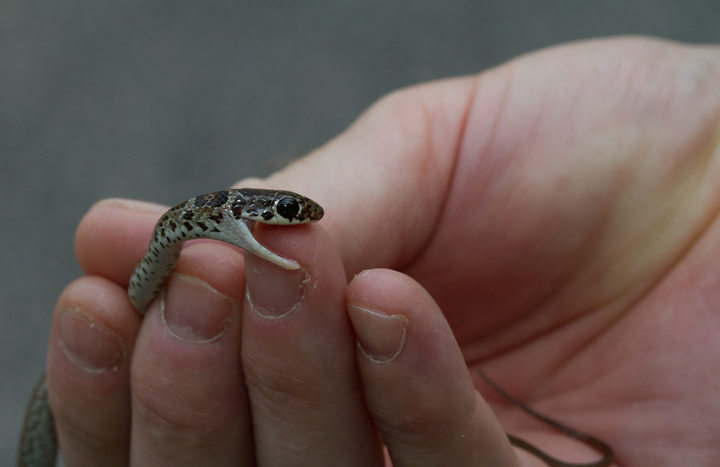

Laurie Vitt as part of a partnership between the Wildlife Department and the Sam Noble Oklahoma Museum of Natural History. Within a few minutes of handling, the snakes relax considerably and usually do not continue biting as long as they are handled gently. Their small teeth cause minimal bleeding and they are nonvenomous. If grabbed, eastern racers bite immediately. Typically when these snakes “race” off, they crawl into the center of shrubs or under surface objects and seemingly disappear. Look in open areas, fields, or along edges of unpaved roads. The only other snake that moves this rapidly is the coachwhip, which is much larger. They are frequently seen on roads during morning or late afternoon and when approached, they “race” away. These are among the easiest snakes to find and observe, especially during spring. The belly is usually yellow with rows of dark spots extending along most of the belly.
#Juvenile black racer series#
They also have a series of smaller blotches along the lateral surfaces of the body.

Juvenile eastern racers have distinct regular blotches along the dorsal surface rather than irregular cross-markings. The two species can be distinguished by differences in dorsal and ventral color patterns. The young, juvenile snakes have patterns across their scales, usually in red or brown. All of the subspecies have rather shiny scales, but their color varies from black and gray, to bluish and brown. Juveniles can be confused with coachwhip juveniles. Description of the Black Racer The appearance of this snake species varies based on the region. Both adults and juveniles are nervous, active snakes and usually bite immediately when handled. The background color is gray and a series of irregular dark brown blotches extend from behind the head to the tail. Juveniles differ considerably from adults. The top half will be black and the bottom half will be cream or white. Adults can be distinguished easily from other snakes in the area by keying in on the head and neck region. have even been recorded consuming Prairie Rattlesnakes in the Black Hills. There are no stripes, cross bands, or blotches. Juvenile North American Racers are much different in appearance from adults. The eastern yellow-bellied racer can be found statewide except the Coastal Plain region of Oklahoma and the eastern quarter of the state. Background color of the body of adults is black in eastern Oklahoma. The eastern racer can be distinguished from all other snakes in the region by a combination of smooth scales, cream to yellow belly with no marks, moderate size, and a divided anal scale.


 0 kommentar(er)
0 kommentar(er)
